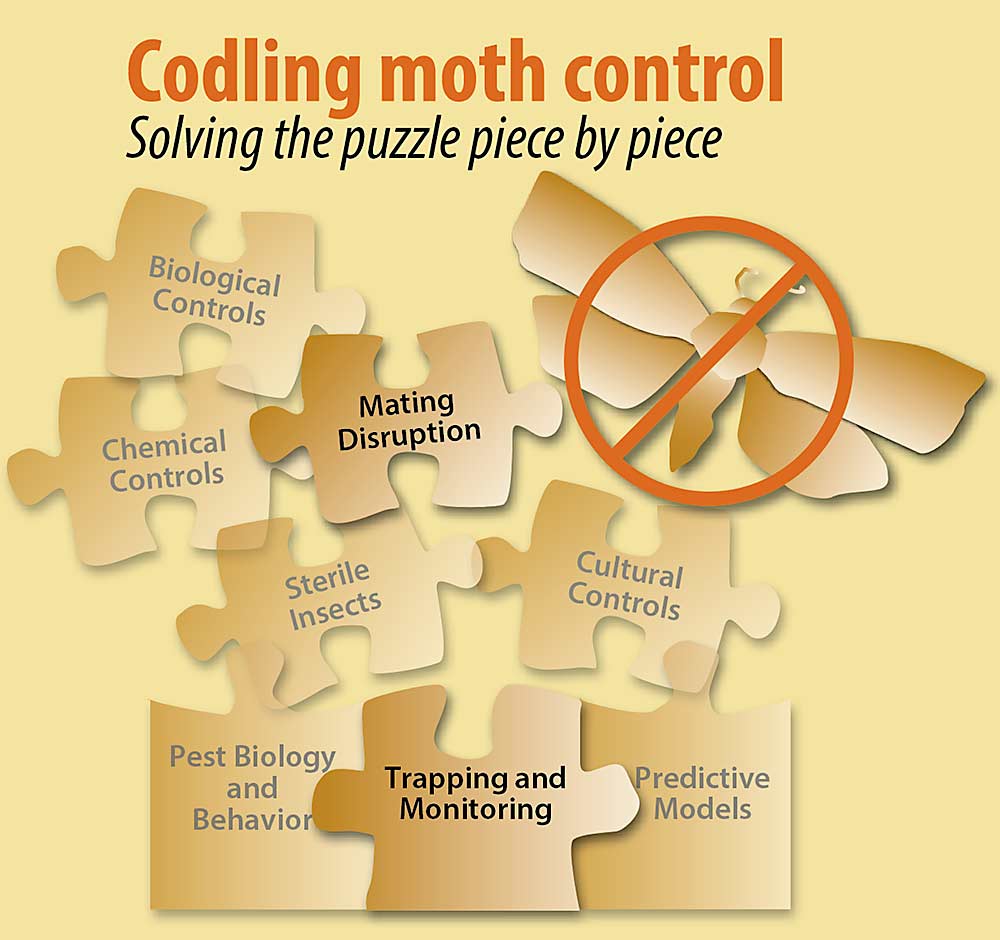
Successful codling moth control results from growers and pest consultants putting together many pieces. The leaders of a recently formed Codling Moth Task Force believe that understanding this big picture of how different aspects of the codling moth program fit together and influence each other is critical to successful IPM programs.
Some pieces, such as understanding pest biology and monitoring to assess pest pressure in individual orchards, provide the foundation upon which the rest of the control is built.
As Good Fruit Grower rolls out more coverage of the Codling Moth Summit and other stories on this topic, we hope using this piece-of-the-puzzle framework helps to show our readers how it’s all connected.
Mating disruption revolutionized codling moth management, but its performance can and does vary from orchard to orchard and season to season.
That variability contrasts with the consistency seen in mating disruption for oriental fruit moth — a discrepancy that sent entomologists on a decades-long journey of discovery into how the moths respond to disruption of sex pheromones. The insight from that research now informs best practices for codling moth mating disruption, said Don Thomson, president of Pacific Biocontrol Corp. of Vancouver, Washington. Pacific Biocontrol makes the Isomate line of pheromone products and has been researching mating disruption for over 30 years.
Thomson gave a talk summarizing the research into pheromone response and how to harness it for the best codling moth control during the Codling Moth Summit, organized by Washington State University Extension and the industry’s codling moth task force.
Most people would rate the efficacy of oriental fruit moth mating disruption as a “10 out of 10,” Thomson said, “but the efficacy of codling moth mating disruption is more variable.”
Understanding the difference starts with the physiological responses of each insect to their pheromone, he said. All moths have sensillum — specialized hair-like structures on the antennae that take up the pheromone molecule. The pheromone molecules bind to receptors within the sensillum, and then a signal is sent to the male moth’s brain. A very small amount of pheromone triggers the male to fly upwind toward the female by following a gradient of increasing pheromone concentration to eventually find its potential mate.
The difference is that when oriental fruit moth is exposed to a high level of pheromone released from dispensers, it overwhelms that gradient-following behavior and actually halts the flight, Thomson said. But studies have shown that the amount of pheromone released from dispensers is far less than that needed to cause a similar shutdown in codling moth.
Instead, pheromone exposure from dispensers or aerosol emitters turns codling moths into “super searchers,” Thomson said. He cited research from Gary Judd of the Summerland Research and Development Centre in British Columbia and findings from Peter McGhee and Larry Gut at Michigan State University that show codling moth, when exposed to high concentrations of pheromone, searched more when transferred to another orchard or wind tunnel.
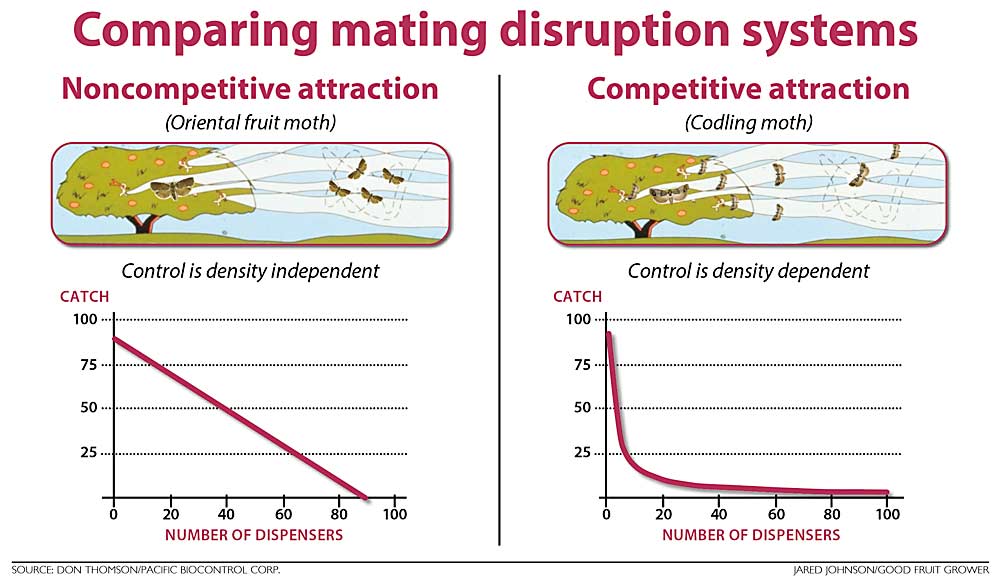
While oriental fruit moth can be shut down, which entomologists call noncompetitive mating disruption, codling moth males will continue to search. That means pheromone dispensers are competing with wild females.
“Control is density-dependent,” Thomson said. Unlike oriental fruit moth, which can be controlled well by consistent coverage and exposure to high concentrations of pheromone, codling moth dispensers need to be strategically placed to respond to pest pressure.
“Dispenser density relative to codling moth population is really important. You need to know where your hot spots are,” he said. “You need to use pheromone traps.”
The number of point sources necessary also depends on population density and the amount of pheromone released by the dispenser.
Thomson reviewed the conclusions of trials led by Gut, the late MSU entomologist. Gut compared higher-release-rate dispensers (Isomate CTT) at 200 per acre to lower-release-rate dispensers (Isomate C+) at 400 per acre and found that more dispensers delivered the lowest fruit injury at harvest.
“Increasing the release rate, increasing the pheromone concentration out there, does not compensate for putting out less point source per acre,” Thomson said.
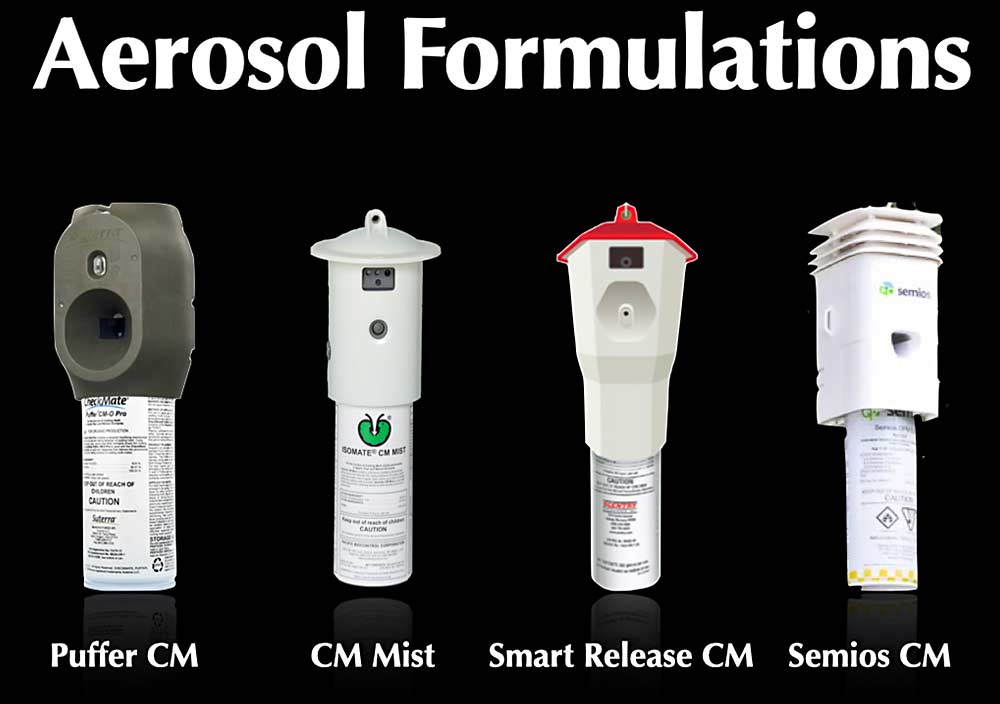
But, when Gut repeated the same approach in orchards with low codling moth pressure, he found minimal difference between the number of point sources, indicating that growers could safely reduce the cost of dispensers.
That’s why “monitoring of populations is critical,” Thomson said.
He also discussed how aerosol emitters work to blanket such a wide area with pheromone. The pheromone is mixed with a solvent and a propellent gas that triggers an explosion of tiny particles with each release.
“These small particles, just like spray drift, can move a long way,” he said.
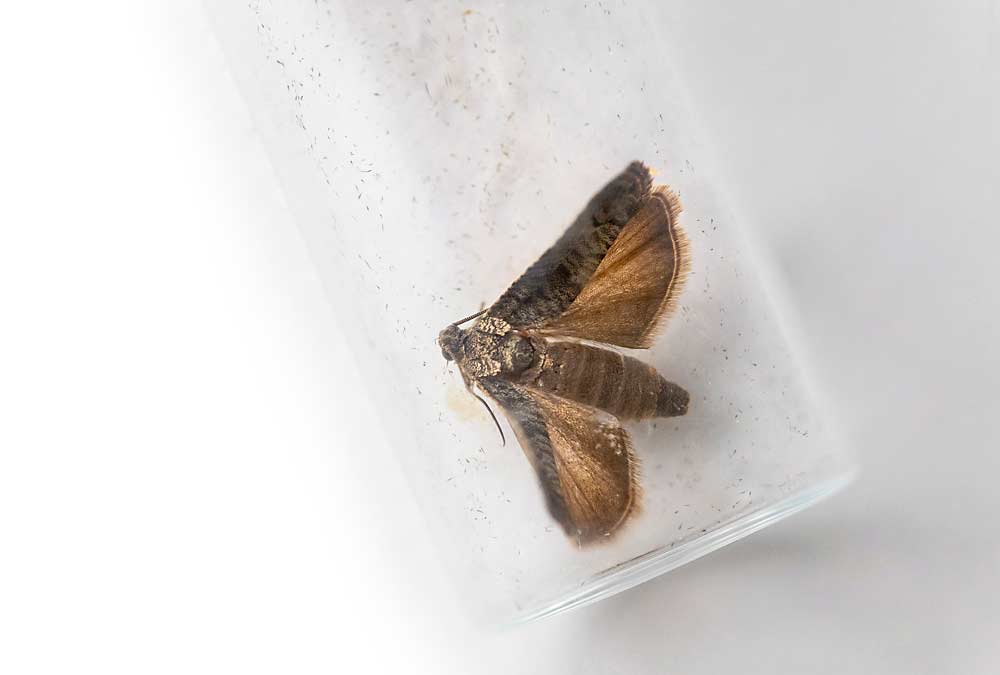
The moths follow the pheromone gradient and accumulate behind the emitter, leaving the females alone and unmated downwind. Trials have shown that placing two aerosol emitters per acre reduces trap catch by about 90 percent, the equivalent of 400 hand-applied dispensers per acre.
That trial used 10-acre research blocks, but Thomson said bigger blocks see greater efficacy with aerosols. The most important thing when relying on aerosols is not to turn off the emissions, he said, although one emission per hour is sufficient (and twice is not better).
Growers also need to be wary of the windward border, he said, as gaps can occur. Thomson recommended using border sprays or additional hand-applied dispensers on those borders.
As for whether he recommends hand-applied dispensers or aerosols, Thomson said, “Both can work and both can fail. It’s all about how you manage the system relative to the kinds of populations and densities you have.”
—by Kate Prengaman

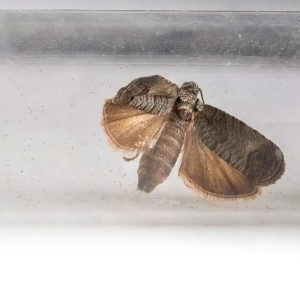
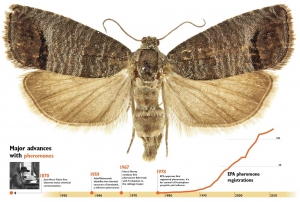
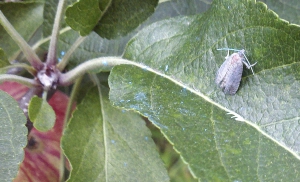





Leave A Comment